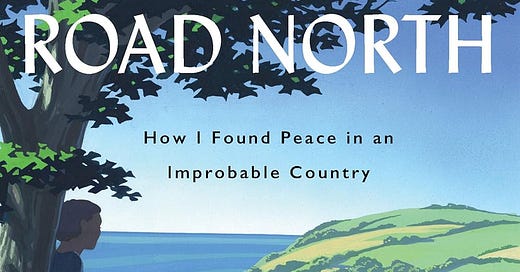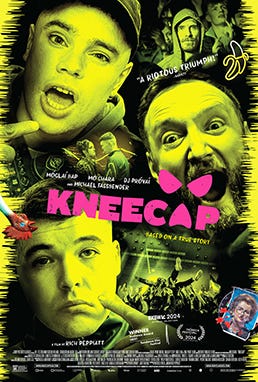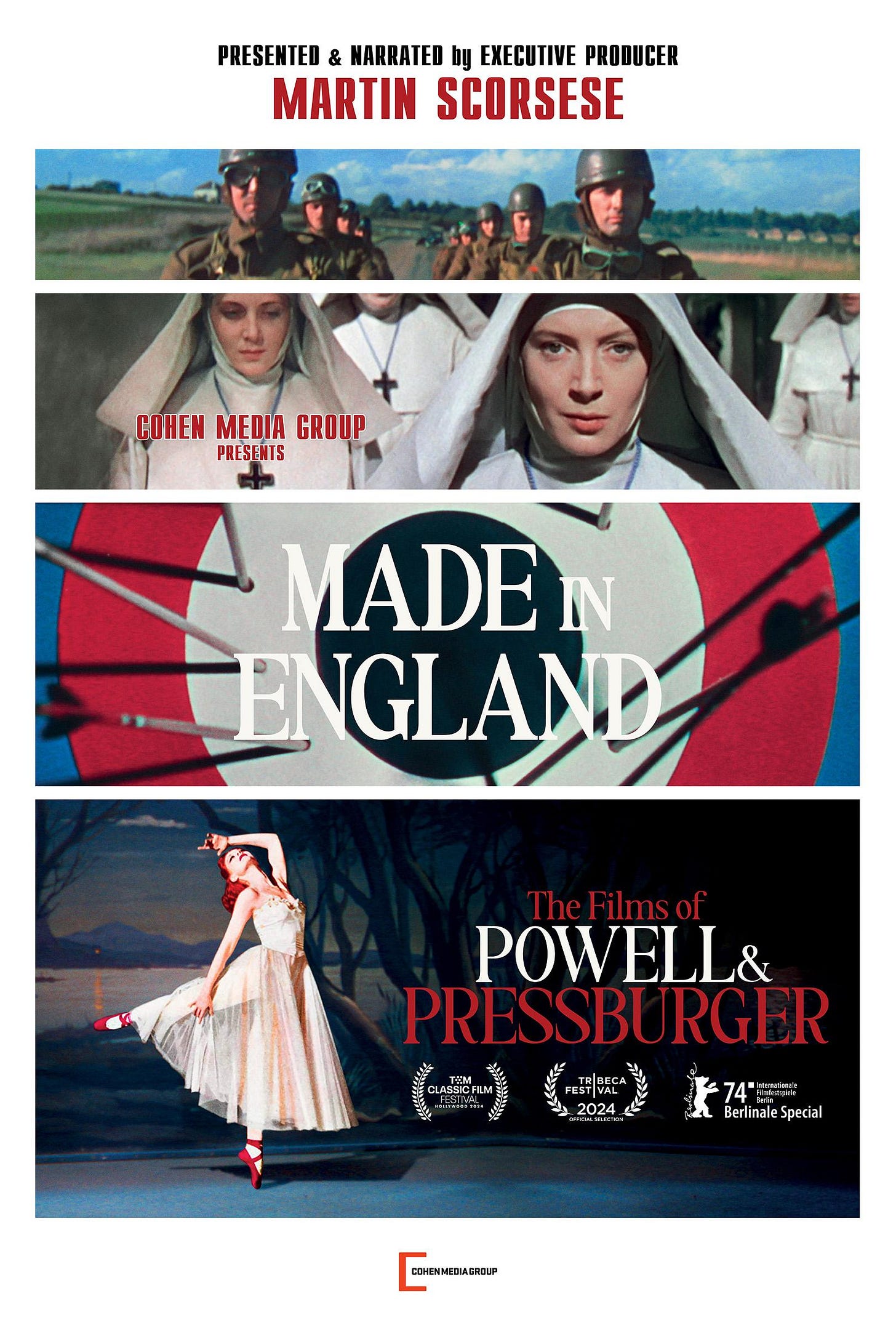C&C 52: Mourning and Musical Mayhem in Northern Ireland
Plus Scorsese’s latest love letter to cinema and a cocktail discovery
When Rosie Schaap first ventured to the North of Ireland decades ago, it was a “place I was told I should not visit.” When she relocated there, a transition recounted in her new memoir The Slow Road North: How I Found Peace in an Improbable Country (2024), she was in a state of flux herself, recently widowed and also mourning the loss of her mother. Feeling adrift, she left Brooklyn and settled in the village of Glenarm, which a friend described to her as “a healing place.” Perhaps all of the North was, given its recent emergence from the violence known as The Troubles; Schaap recalls a trip to Belfast and discovering a city “of warmth and humor and openness, and an enthusiasm for visitors which had had little outlet during three decades of deadly conflict.”
Schaap writes with candor about loss, and how that feeling brought her to her new home: “Wasn’t grief—along with the stunning coastline, the hills and glens, the poetry, the pubs, and the craic—one of the things that Ireland did best?” That “distinctive response to death, dying, mourning, and (not) moving on—not so fast, anyway” animates the book, with Schaap articulating the contrasts:
There was something different about the conversations with my friends in Ireland: a quality of acceptance, a directness, interest—sympathy unburdened by pity. Laughter was part of our conversations, too: a reprieve from the obligatory solemnity of bereavement I felt was required of me back home (whatever else we Americans are or are not, in this way our Puritan roots still show).
As in her previous memoir, the wonderful Drinking with Men (2013), Schaap writes evocatively in a way that frequently catches you off-guard, as when she describes sitting with her husband Frank in a hospice, when “his mind was still alight with curiosity, still glimmering, more votive than bonfire now.” But this book is about life as much as death, Schaap relying on Eva Gabor in Green Acres as a role model as that slow road takes turns leading to unexpected destinations: happiness, fulfillment, renewal. She also vividly evokes the New York where she (and I) grew up, a relic from a bygone era when “social workers could still afford to buy houses in Brooklyn” and her aunt and uncle, “bohemian radicals of the old school,” could fill a Greenwich Village apartment with troublemakers and beautiful things.
Related: Schaap responds to the questionnaire at Memoir Land, and a recent New York Times story about her late cousin, disc jockey Phil Schaap, and his astonishing collection of jazz history.
In her book, Schaap acknowledges the linguistic contortions required when referring to that region of the Emerald Isle, with Catholics preferring the North of Ireland while Protestants insist on Northern Ireland. It tells you everything you need to know about the tone of the raucous comedy Kneecap (2024) that, when one member of the title Belfast hip-hop trio finds himself in a relationship with a Protestant woman, they incorporate this lexical difference of opinion into their sex talk—which is, of course, hostile. The movie brims with wild energy and grim humor as it details the exaggerated legend of Kneecap, whose insistence on performing in the Irish language puts them afoul of the law, their families, Gaelic activists, and ex-paramilitaries who have transitioned into petty crime. It’s hilarious. My father was from the North—I laughed out loud when Schaap wrote that no matter what someone from there says, “it sounds like they’re making a threat. Even if they’re just asking for a cup of tea or the time of day”—and he taught me the few words of Gaelic that I know: how to bless myself, which is very on brand. I found a tutorial video, and didn’t the old man get it right.
What (Else) I’m Watching
Made in England: The Films of Powell & Pressburger (2024). Martin Scorsese executive produced and narrated this documentary directed by David Hinton, but his love of cinema and specifically the work of the duo known as the Archers infuses every frame. He uses his own films in extraordinary fashion, deploying clips from Raging Bull (1980) and others to demonstrate how much he has drawn on the output of Michael Powell and Emeric Pressburger, a team of collaborators never properly appreciated in their own time and (in the latter’s case, adopted) country. Scorsese speaks movingly of how these films have always been a part of his life, becoming more meaningful to him as he grows older. It’s astounding to hear him hold forth on the impact their movies had when he initially watched them in black and white—not in the glorious color in which most of them were shot—on a tiny television set on Million Dollar Movie, another reference that gave me a hard jolt of New York nostalgia.
Scorsese and Powell would become unlikely friends late in Powell’s life, with Powell marrying Scorsese’s longtime editor Thelma Schoonmaker. This testament to the power of partnerships and of holding true to one’s instincts in order to create art of lasting value made me glad I’ve seen so many Powell & Pressburger films—A Matter of Life and Death (1946), The Red Shoes (1948), The Tales of Hoffmann (1951)—on the big screen. It’s worth watching this one there, too, especially as, in the case of SIFF Cinema, it often heralds a full Powell & Pressburger series.
What I’m Drinking
After seeing Made in England we hied ourselves to Rich Rich for a cocktail. My eye was drawn to the White Collar, a drink concocted in 2014 by Zachary Gelnaw-Rubin at the bar Dutch Kills in Queens. Was it named after the old USA Network TV series, which went off the air that year? Possibly, but the ingredients made me think of the Blue Collar, conceived by Michael Madrusan at New York’s Milk & Honey a few years earlier. The main difference between the Collars: the savvy switching out of sweet vermouth for blanc, which I use at every opportunity. I’ve even started spritzing some on as cologne. The White Collar may be a recent acquaintance, but I expect it to hang around.
The White Collar
2 oz. rye whiskey
½ oz. blanc vermouth
½ oz. Amaro CioCiaro
⅛ oz. (or 1 barspoon) maraschino liqueur
2 dashes orange bitters
Stir. Strain. Garnish with a lemon twist.







Thanks for the Recommendations. The Slow Road North is going on my list of books to read.
So looking forward to reading Rosie's book. And really wanted to catch this documentary. Massive P&P fan here, Black Narcissus especially.